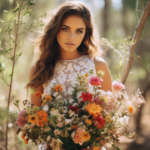Flower photography is a captivating art that allows photographers to showcase the delicate beauty and vibrant colors of nature. Whether you’re a seasoned professional or a budding enthusiast, mastering this genre requires a blend of technical skill and creative vision. Here are some essential tips and techniques to help you capture stunning flower photographs.
1. Choose the Right Time of Day
Lighting plays a crucial role in flower photography. The golden hours—shortly after sunrise and before sunset—offer soft, warm light that can enhance the natural colors and details of flowers. Avoid shooting in harsh midday sun, as it can create strong shadows and wash out colors. If you must shoot during bright daylight, consider using a diffuser to soften the light.
2. Get Up Close and Personal
Macro photography is particularly effective for capturing the intricate details of flowers. Use a macro lens or a camera with a good macro mode to get close-up shots that reveal the texture, patterns, and tiny structures of petals and stamens. This approach can transform a simple flower into a stunning work of art.
3. Pay Attention to Composition
Composition is key in any type of photography. For flower photography, consider the rule of thirds to create balanced and visually appealing images. Position your main subject off-center and use the surrounding space to complement it. Experiment with different angles and perspectives—try shooting from below the flower or directly above to find the most striking composition.
4. Mind the Background
A distracting background can take away from the beauty of your flower subject. Aim for a clean, uncluttered background that highlights the flower. You can achieve this by changing your shooting angle, using a wide aperture to blur the background, or placing a piece of colored paper or fabric behind the flower.
5. Use a Tripod for Stability
When shooting close-ups, even the slightest movement can result in a blurry image. A tripod provides the stability needed to capture sharp, detailed photos. It also allows you to take your time composing your shot and adjusting settings without worrying about camera shake.
6. Experiment with Depth of Field
Depth of field can dramatically change the look and feel of your flower photos. A shallow depth of field (achieved with a wide aperture) will isolate the flower from its background, making it stand out. A deeper depth of field (using a smaller aperture) keeps more of the scene in focus, which can be useful if you want to include multiple flowers or elements in the frame.
7. Post-Processing for Perfection
Even the best photos can benefit from a little post-processing. Use photo editing software to enhance colors, adjust exposure, and sharpen details. Be mindful not to overdo it—aim for natural enhancements that make your flowers look their best without appearing artificial.
By following these tips and techniques, you’ll be well on your way to creating beautiful, captivating flower photographs that showcase the intricate beauty of nature. Remember, practice and experimentation are key. So grab your camera, head outside, and start capturing the stunning world of flowers!


